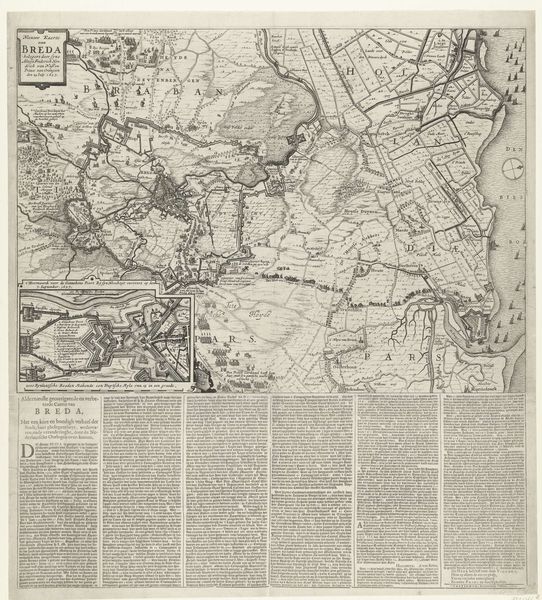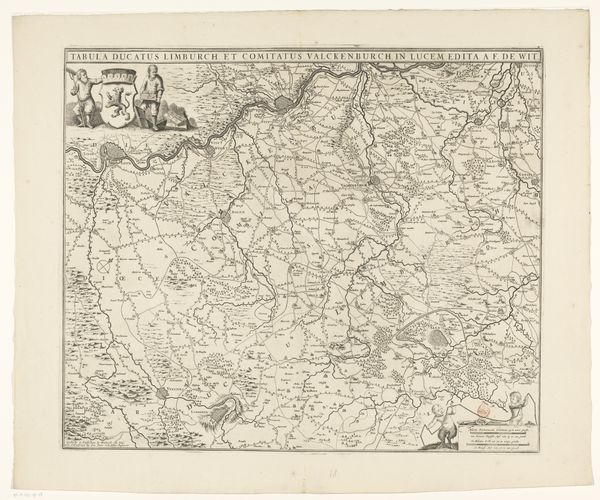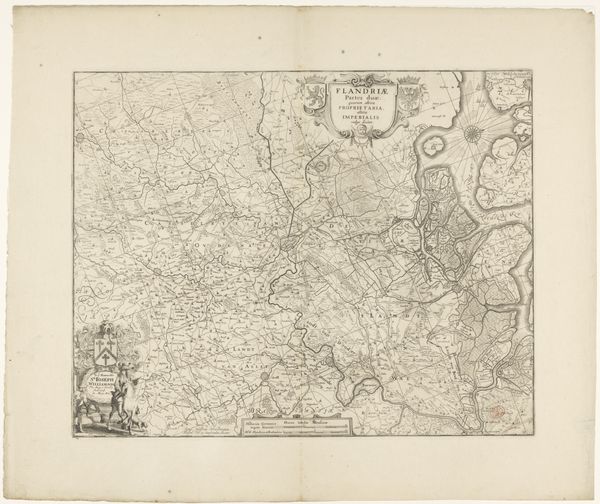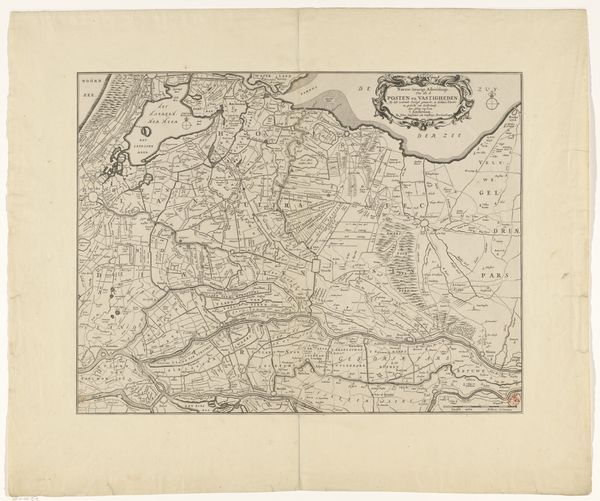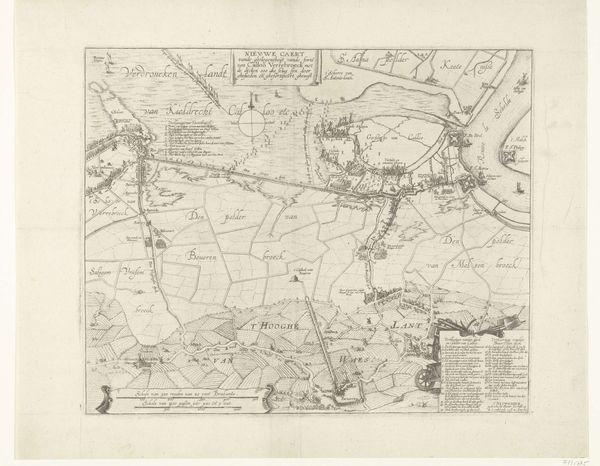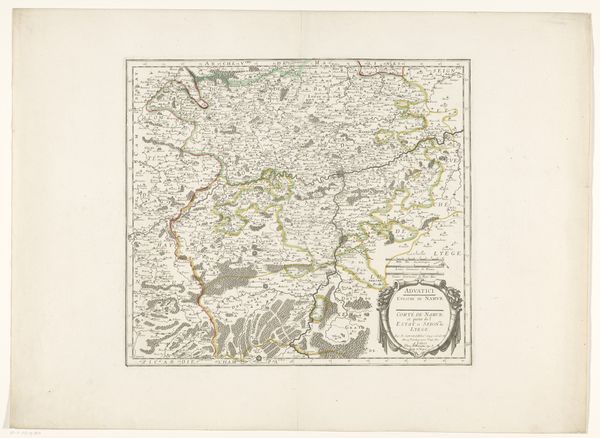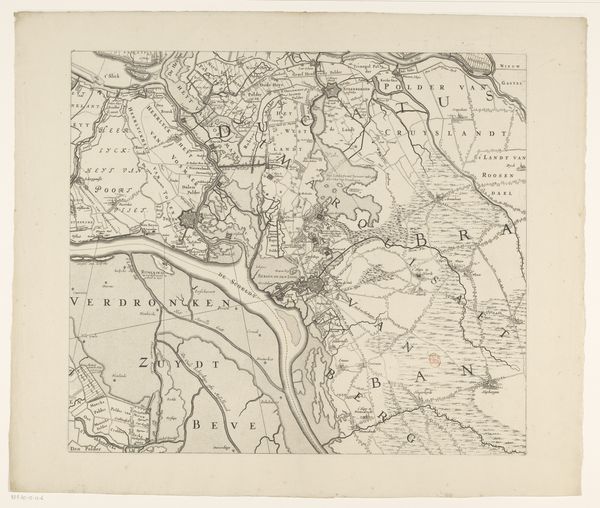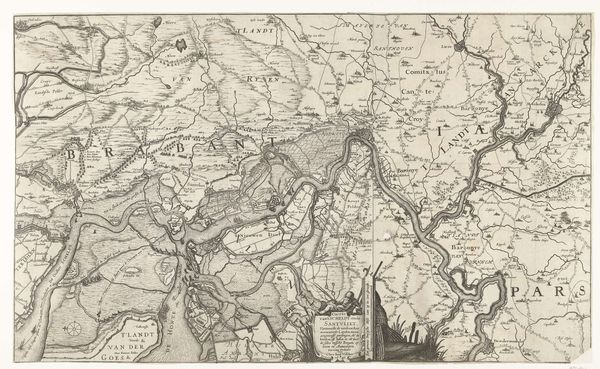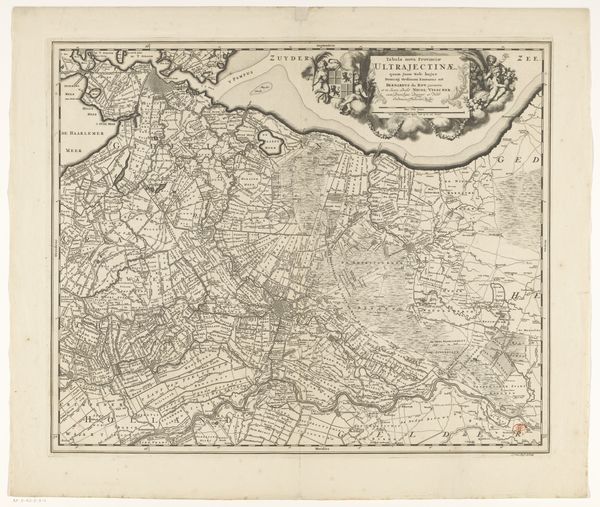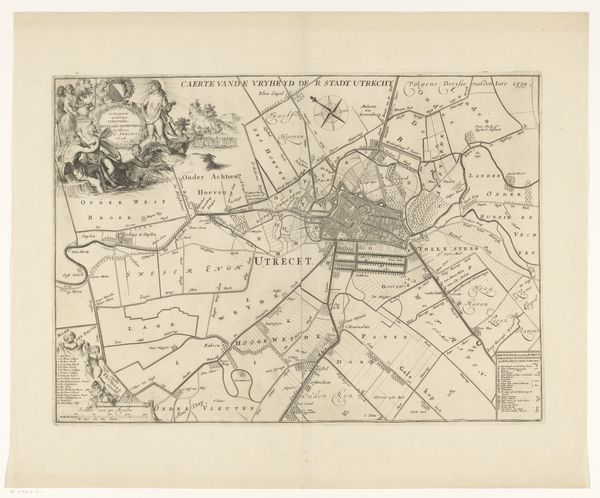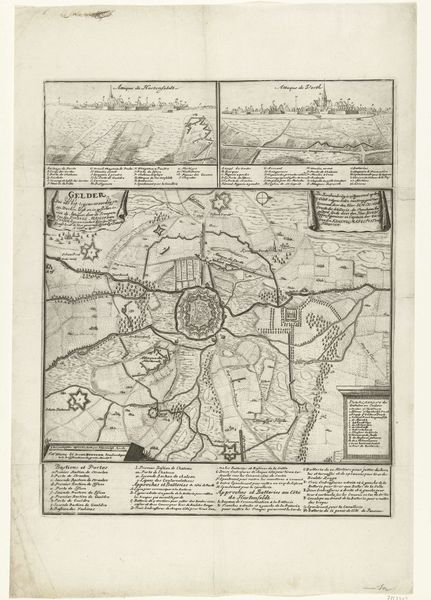
print, engraving
#
dutch-golden-age
# print
#
old engraving style
#
landscape
#
geometric
#
line
#
cityscape
#
engraving
Dimensions: height 518 mm, width 517 mm
Copyright: Rijks Museum: Open Domain
Claes Jansz. Visscher's map of the siege of Breda, made around 1637, presents us with far more than mere geographical data. It speaks of power, strategy, and the human drama inherent in conflict. Consider the figure of the soldier near the bottom left. He embodies a motif of military readiness and human vulnerability, a testament to conflict. This figure appears throughout history, echoed, for example, in depictions of Roman soldiers—strong yet marked by the gravity of war. Such symbols are not simply replicated; they are transformed, imbued with new meanings that reflect shifting cultural anxieties and aspirations. This image taps into a shared, subconscious awareness of war, where we see echoes of collective memories. It reveals the enduring, cyclical nature of human conflict. It serves as a reminder that even in precision mapping, the human element—with its timeless fears and ambitions—remains the most vital.
Comments
No comments
Be the first to comment and join the conversation on the ultimate creative platform.
